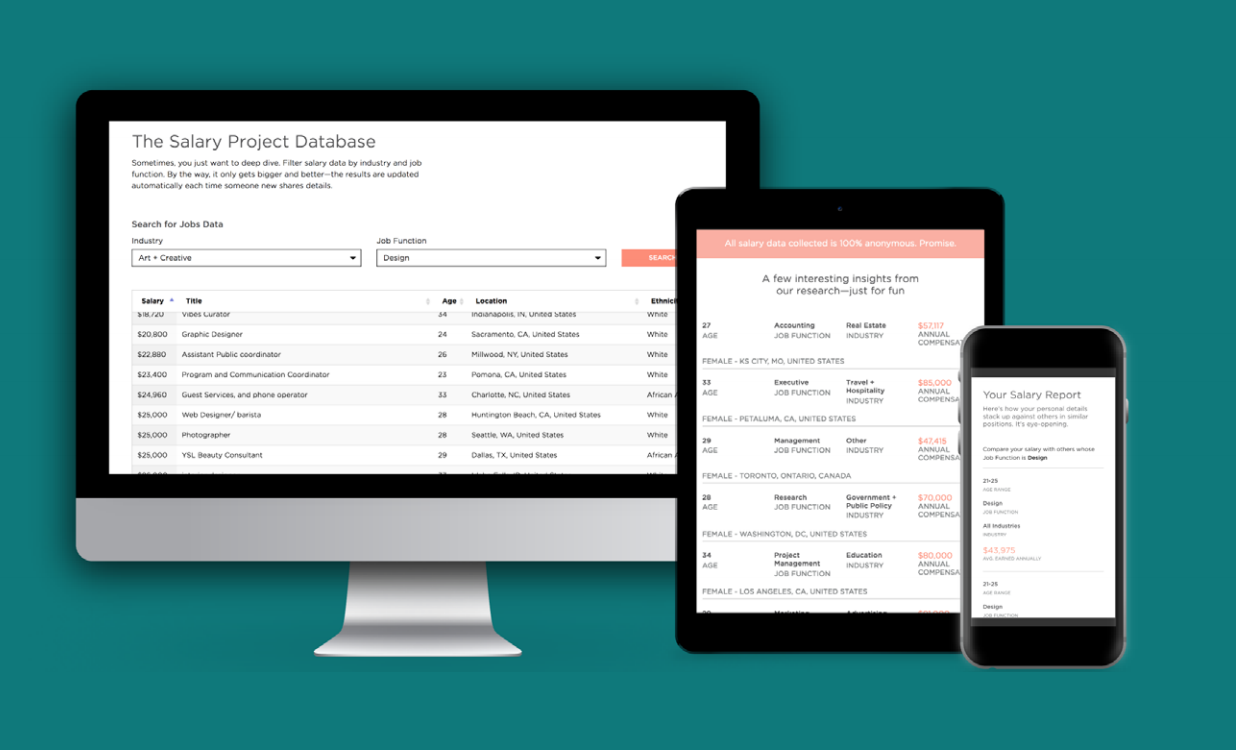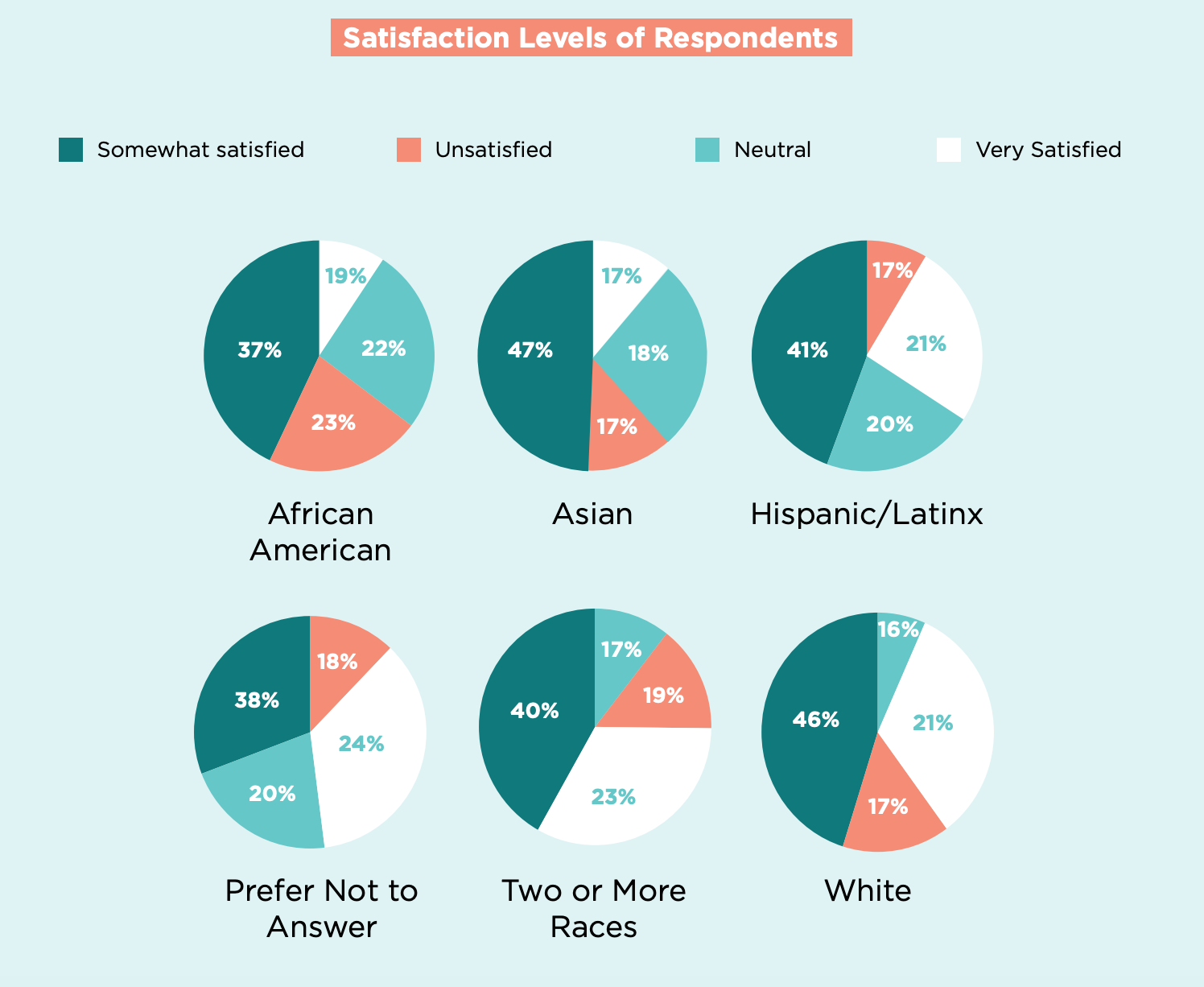It’s Equal Pay Day, are you wearing red?
Equal Pay Day is symbolically held this Tuesday, April 2nd—to represent how far in the following year a woman has to work to earn what a man already made in the last year. We cover this day, every year, fresh off the momentum of Women’s History Month.
This past March, we
highlighted some encouraging statistics about women in the workplace. However, we can’t ignore the fact that salary disparity still exists. It’s moving in the right direction, but slowly.
Last year, before Women’s History Month began and before Equal Pay Day, we launched
The Salary Project™ in order to help gain more salary transparency among women.
What is Salary Transparency + Why Does it Matter?
Talking money is uncomfortable, both on a personal level and on an organizational level—it’s just as uncomfortable for giant Fortune 500 companies. Salary transparency, simply put, is the disclosure of real salaries earned by real people in a company.
Salary transparency, when offered by a company, is a clear, figure-based communication around your compensation methods.
By doing this, a company provides a clear understanding of compensation philosophy, strategy, and practices. By disclosing these hard numbers, a company is also forced to reckon the why of their methods. It breaks down the compensation structures, base salaries, and performance-based raises. At a basic level, this helps employees (or prospective employees) understand why they are earning what they’re earning.
At a high level? This keeps everyone deeply accountable—at every level.
Every company’s level of transparency will be different. Some might disclose every detail of their compensation methods, of their bonus structure, and of their
career advancement opportunities. Regardless of what a company chooses to disclose, there is more pressure today for companies to be transparent than ever before.
The Birth (+ Growth) of The Salary Project™
We are only one pretty small company, but we do have an audience of incredible women. These women (you!) are working hard every day to advance their careers, to learn new skills, and to explore new paths.
What could we do to help our readers? We decided to create
The Salary Project™, a home-based salary transparency tool. Over the past 15 months, we have collected over 20,000 real salaries in a database created by our readers, for our readers.
Suddenly, we were data rich—and we wanted to do something to disseminate our own numbers. So, we hired a data scientist (data scientists are awesome) to break apart this data, to find trends, and to give us a figures-based idea of where things are headed.
We learned some really amazing things about salary disparity between industries, races, education levels, geographic locations, and
marital status.
The most exciting thing we learned was that women are advocating for themselves—more than ever.
Our New Takeaway: The “Happy” Employee—and Why She’s Job Searching, Anyway
We were pretty tickled to learn that a lot of our readers are happy in their current jobs. While we don’t like to toot our own horn, we like to hope that y’all found a great job by updating your LinkedIn resume, by using
the Gimme script, or by advertising your impressive soft skill sets.
In fact, over 65 percent of
The Salary Project™ respondents reported that they are happy at their current jobs.
That’s a pretty awesome rate of job satisfaction—we are so proud that so many women are feeling empowered and motivated by their current jobs. What we found out next was really cool.
Even though over 65 percent of respondents reported being happy at work, we found that 70 percent of women were still looking for new opportunities, whether actively or passively.
What does this mean for employees + employers?
For Employees
Well, we think this means that women who are actively (or passively) looking for a new job are happy—but not happy enough to stay forever. In fact, of all our respondents, very few expressed long-term interest in longevity at their current jobs. We spoke to
Monster career expert,
Vicki Salemi, about this trend and what it means from an employee standpoint.
"It’s great to start looking for a job when you’re happy at work. You can be more objective when you know that you don’t ‘have’ to take a job. When you’re happy in your current role, you can negotiate from a position of power. You can accept a job offer because you really want to."
To us, this indicates that women are taking their salaries and their career development into their own hands! By constantly researching the possibility of new opportunities, women are empowering themselves (and their careers) by actively acquiring information on industry rates, requisite skill sets, and, of course, salary standards.
For Employers
Even though your employees are happy, they are still looking for new opportunities. With an ample amount of information, aggressive recruiting, and attractive recruitment sites, the knowledge is out there.
For employers to combat this deluge of information, they need to be as transparent as possible. Whether or not a company decided to disclose its standard payment structure, there are other avenues to explore. Offer your employees education incentives. On a managerial level, speak with your employees about advancement opportunities, transition opportunities, and opportunity in general. Don’t keep secrets. From an employer's standpoint,
Salemi explains,
"When you lack the means to give an employee a monetary raise, polish their skill sets for a future growth opportunity.”
Employers can nurture, empower, and communicate with their employees. When the opportunity is at arm’s reach—and there is a structured plan on how to achieve it—an employee is less likely to explore other avenues.
Going Forward
While we were (and are!) so excited to learn this, we recognize that there is work to be done. Salary disparity exists between men and women, but then at deeper levels—between WOC and white women.
As we recognize today, we also look ahead to race-based salary disparity, observe those days, and do all that we can do to close these gaps.
- March 5, 2019: Asian American women’s Equal Pay Day
- April 19, 2019: White women’s Equal Pay Day
- June 10, 2019: Moms’ Equal Pay Day
- August 22, 2019: Black women’s Equal Pay Day
- September 23, 2019: Native women’s Equal Pay Day
- November 20, 2019: Latinxs’ Equal Pay Day
In observing these important days every year, we can push for an equal pay day that occurs on December 31st—every year, for everyone.













